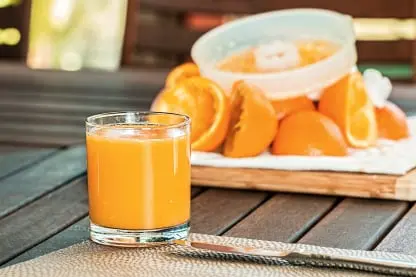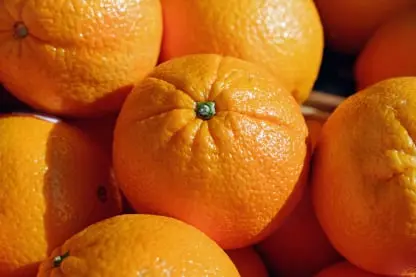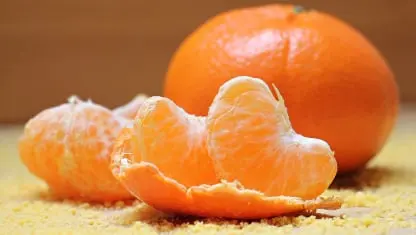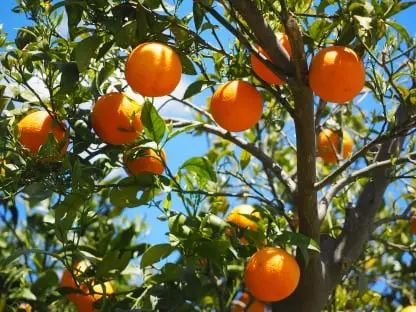Orange packing app:
Orange packing app for fresh orange packing, sort, grade, long term orange storage, pack oranges for domestic and export; full orange traceability, orange inventory, orange recall & audit. Complete orange packing management app.

Orange Packing App for accurate order filling & production
View Packing App Specifications.
Orange packing systems:
One of the primary aims of a packaging system is to protect the fresh orange product from microbial spoilage and chemical deterioration during distribution and orange storage. For orange juice, measures should be taken to protect vitamin C and flavour compounds, and to prevent microbial growth and colour changes.
Vitamin C is the compound in orange juice that reacts most readily with oxygen, and its loss correlates with the oxygen-barrier properties of the package. The degradation products of vitamin C contribute to browning.
Light, in combination with excessive oxygen (head-space and dissolved oxygen, and high oxygen permeation through the package), is known to accelerate flavour changes and aerobic degradation of vitamin C. Anaerobic degradation of vitamin C also takes place but independent of oxygen.
THE CULPRITS OF QUALITY LOSS
High storage temperatures combined with oxygen are the main factors involved in quality deterioration over time.

Orange packing app manages food safety
Orange packing and Microbial development, enzymatic action, and chemical reactions influence the quality of untreated natural orange juice, compromising its organoleptic characteristics and causing nutritional value loss. Active low-density polyethylene (LDPE) films containing green tea extract (GTE) were previously prepared by a blown film extrusion process. Small bags were prepared from the produced films, which were then filled with fresh orange juice and stored at 4 °C. Ascorbic acid (AA) content, sugar content, browning index, color parameters, pH, total acidity (TA) and microbial stability were evaluated after 3, 7, and 14 days of storage. The packaging containing GTE maintained the microbial load of fresh juice beneath the limit of microbial shelf-life (6 log CFU/mL) for the bacterial growth, with a more prominent effect for LDPE with 3%GTE. Regarding yeasts and molds, only the CO_LDPE_3GTE package maintained the microbial load of fresh juice below the limit for up to 14 days. At 14 days, the lowest levels of AA degradation (32.60 mg/100 mL of juice) and development of brown pigments (browning index = 0.139) were observed for the packages containing 3% of GTE, which had a pH of 3.87 and sugar content of 11.4 g/100 mL of juice at this time. Therefore, active LDPE films containing 3% of GTE increase the shelf-life of fresh juice and can be a promising option for storage of this food product while increasing sustainability.

Orange Packing App for reduced food & fresh produce waste
REGULATING PESTICIDE USE
Several types of pesticides are used to protect citrus crops. As pesticides can be harmful to humans their application is closely regulated by government agencies.
A pesticide – or rather its active substance – is evaluated based on its predicted residues in the fruit and its toxic effect. Its use is permitted if a consumer’s likely intake will be below both the acute reference dose and the acceptable daily intake of the active substance.
How and when to apply a permitted pesticide is defined in good agricultural practices (GAP).
11.1
STANDARDS GOVERNING JUICE COMPOSITION AND LABELLING
Many countries have several regulations governing fruit juices. These regulations typically cover juice origin, processing methods and composition. Although attempts are continually being made to harmonize the legislation between different global trading blocs to facilitate juice production and trade, several significant differences between regulations still remain. Moreover, regulations will continue to change as world standards evolve.
In the European Union and many other countries, the term orange juice may only be used for juice extracted from sweet oranges, Citrus sinensis. In the US, however, regulations allow for up to 10% of tangerine or hybrid orange/ tangerine juice to be included in orange juice. Also, the Codex standards permit the inclusion of 10% mandarin juices. These juices can improve the colour and flavour of blended juice.
Regulations governing direct juice, or NFC, in principle require that nothing may be removed or added during juice extraction and further processing.
The current EU Fruit Juice Directive specifies that orange juice should be extracted by

Orange packing app manages supplier food quality and traceability
The EU Fruit Juice Directive also now authorizes debittering (removal of limonin) provided it does not significantly affect the composition of other compounds in the orange juice, such as acids and sugars.
These changes align EU regulations more closely with those in the US, Brazil and several other countries where in-line pulp wash addition and debittering are permitted.
EU legislation covering fruit juices and fruit nectars is based on Council Directive 2001/112/EC concerning fruit juices and certain similar products.
Some specific labelling requirements are given in the Fruit Juice Directive. In addition, other EU legislation regulating many types of foods, such as the directives on labelling and additives, also applies to fruit juices.